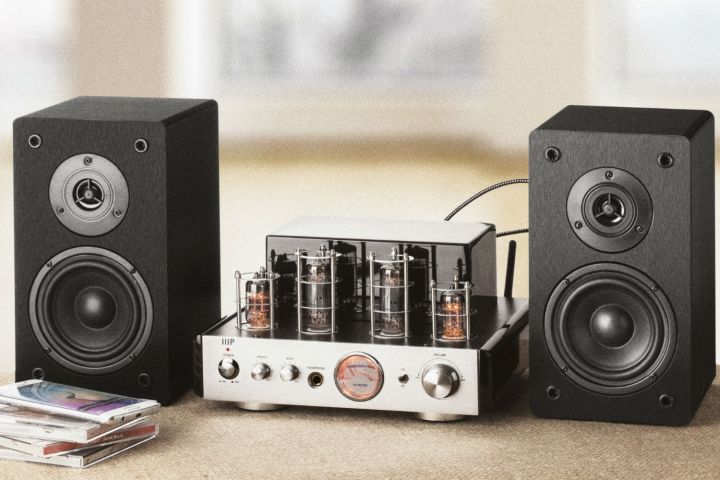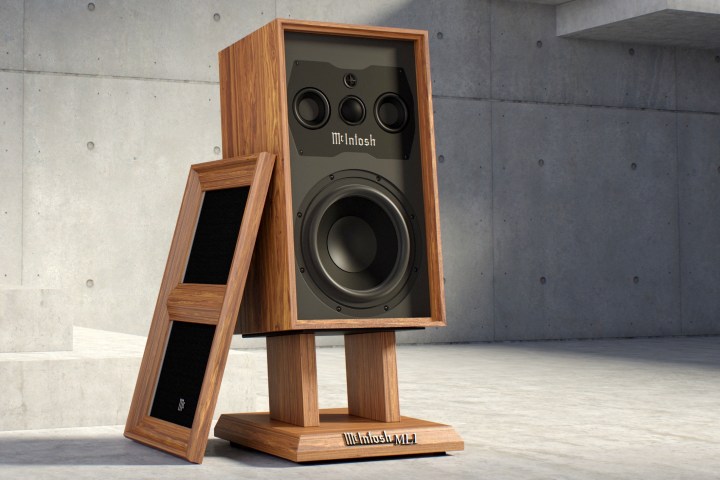
Additionally, what we have traditionally characterized as a “speaker” has changed significantly over the years, with the rise of Bluetooth speakers, wireless speakers, and all-in-one powered speakers that are redefining the hi-fi system from its component-based roots. We are in the privileged position of having companies send us review loaner units that we put through the wringer, and there are tons of them. So, how does one decide?
Speaker reviews can help ease the process by separating the proverbial wheat from the chaff. They can also introduce us to those hidden gems that might have otherwise gone unnoticed and give us a clue as to whether we are barking up the right tree with a particular brand or model. It helps, however, if you know where the reviewer is coming from and can take that into consideration when reading their review.
To that end, here’s an inside look at how we go about testing speakers.
Out of the box
There’s just something special about the unboxing experience of a new speaker. This first impression can set the tone for years of ownership, so we take note of what the experience is like and do our best to convey that in our review. We look for adequate protective padding, consider ease of removal, and take note of any accessories (cables, floor spikes, footers, remotes, instruction manuals, etc.) that are included.
We check for quality parts, well-threaded inserts and screws, and expect the installation of any such accessories to go smoothly. If not, we’ll definitely mention it.
Build and finish
A speaker’s build quality is a big indicator of its potential performance. We know that you sometimes may not actually get the chance to see the speakers yourself first if you order online, so we try to convey how they look and feel for you — we also try to take a ton of original photos of them, too, so you get a better look than the marketing images will provide.
We routinely perform the “knuckle test” where we rap our knuckles on the cabinet as we listen carefully. We want to hear a dead thunk and feel the cabinet bite back a bit. This indicates that quality wood was used and that the interior of the cabinet is free from unwanted resonance. This is critical even for smaller Bluetooth speakers, too, as a well-built cabinet or enclosure is always a good sign of quality and ruggedness as much as it is for sound.

What we look for in a speaker’s finish will depend on what type of finish it is. With speakers that have a mock wood (vinyl) finish, we want the laminate to look convincing and for the seams to be well hidden. With real wood finishes, we check for uniformity of stain and color matching amongst other speakers in the system. For gloss finishes, we keep an eye out for brush marks in either the paint or lacquer.
The setup
When setting up speakers, whether it’s a set of passive towers, powered bookshelves, desktop Bluetooth speakers, or a network streaming system like Sonos, we set them up as general users would — representative of real people in real rooms. We have multiple expert reviewers across the country, each with a variety of rooms and equipment types, which we feel is more realistic for the general product range we review. We always note the gear we use and the room situations we’re testing in for transparency and relatability. For testing ultra-high-end speakers and other audio gear, however, we also have an acoustically treated room at our offices for a more controlled environment.
During setup, we make note of how complex it is, how long it takes, and whether there are easy-to-follow setup instructions or resources available (like a product support number or online help agent), always with those less experienced than us in mind.
Manual calibration and EQ
All speakers we test are manually set up and calibrated, if necessary — we do not use any auto EQ or room correction. For the purposes of our speaker evaluations, no equalization or tone control is used. This keeps the playing field level and allows us to evaluate the speaker based on the sound it was engineered to produce. We want to hear the speaker as it is. Once this is done, however, if the speaker or system has any correction software, such as Dirac or Sonos’ Truplay, we’ll check that out, too, and report our findings and comparisons.
Methodology
Our sound quality evaluations are based entirely on listening tests. Therefore, our conclusions are the result of subjective analysis. Some speaker reviewers take a very different approach, placing considerable significance on measurements taken by electronic testing equipment that, among other metrics, measure the frequency response curve of a speaker. Of course, this sort of objective analysis is valuable and has its place in the world of speaker reviews, but it isn’t how we prefer to do it.
The audition

This is the most straightforward (and fun) part of the speaker reviewing process. Essentially, we listen to music tracks that we know inside and out, backward and forward. We listen to all kinds of music because we know you do. Everything from jazz, classical, and movie scores to rock, pop, metal, hip-hop, podcasts, and everything in between. We use tried and tested tracks that are perfect for testing bass, mids, and high frequencies. We know how they should sound so we can hear how well a speaker produces it.
The first things we listen for are blatant diversions from what we know to be reality. If a speaker’s high-frequency response is thin, metallic, and artificial sounding, we’ll hear it right away. Likewise, if vocals sound as if they are being shouted through a thick sheet of velour, it will be pretty obvious. Bloated, tubby bass? We can’t stand it.
We listen for how wide and high the soundstage is, while also adjusting the speakers’ distance apart, angles, as well as their distance from walls and other obstructions, to see how that affects the sound as well. We always try to set up speakers we test, whether they’re portable Bluetooth speakers, subwoofers, or passive tower speakers, in accordance with the manufacturer’s suggestions, if there are any, to give them the best chance at sounding as they’re meant to.
Bluetooth speakers
For Bluetooth speakers, we of course evaluate sound the same way as any speaker, but we also test other features that are indicative of the product range. Features such as connectivity options (i.e.: RCA, optical, HDMI, Bluetooth, Wi-Fi), battery life, ruggedness, dust and water resistance (if it can be dunked, we dunk it), whether it has an app (is it well designed and easy to use?), portability, and more.
Powered speakers
Powered speakers have become a big part of the speaker market for their size (big and small), power, and versatility for being able to replace a boatload of more traditional audio equipment. You can connect them to everything from turntables to phones to TVs, and they can be a cost-effective solution. We review powered speakers much the same way as Bluetooth speakers. We look at connectivity, compatibility, and how they sound and function in all of their various configurations. If they’re desktop speakers, we check out their nearfield capabilities (how they sound at close distances), if they’re big, powered tower speakers, we push them to their limits and compare them to other speakers of their ilk, because we know you’ll want to know what the difference is and if it’s worth your money.
Dolby Atmos
Reviewing Dolby Atmos or other spatial audio speakers is a different beast altogether. Whether it’s a traditional AV receiver-based setup, a soundbar, or other Atmos system with up-firing speakers that help produce that incredible 360-degree sound, we always do this in a room with a flat ceiling (not angled or vaulted) that’s at a normal height (between 7.5 and 14 feet). We also use a spatial audio calibration disc to optimize the system before our tests. We then test the speakers with appropriate Dolby Atmos Music tracks from sources such as Amazon Music and Apple Music, as well as movies or TV shows with Atmos surround sound.
After scrutinizing gads of minute details, we take a step back and consider whether the speakers will appeal to a broad enough spectrum of listeners. A speaker may not suit our personal taste, but if its signature sound is going to meet the favor of a certain audience, then we must submit that it has its place in the market and we’ll note that accordingly. Conversely, if a speaker does really well in our auditions, but is outrageously priced or requires far more power than most have to feed it, we’ll certainly be mentioning that too.
Writing the review
For us, simply organizing our evaluation notes into something that resembles a narrative is not good enough. We aim to give a little back-story on the manufacturer, describe our experience with the speakers, and put their sound signature into a context that is understandable, especially for those not familiar with the audiophile lexicon. We hope that by reading our speaker reviews, you will walk away with a feel for whether that particular model is something you should bother to audition yourself or remove from your shortlist because, ultimately, a personal audition is absolutely essential.
Editors' Recommendations
- We’ve tried them all — these are the best Sonos speakers in 2024
- How we test streaming video devices
- How we test soundbars
- How we test turntables and record players
- How we test AV receivers





